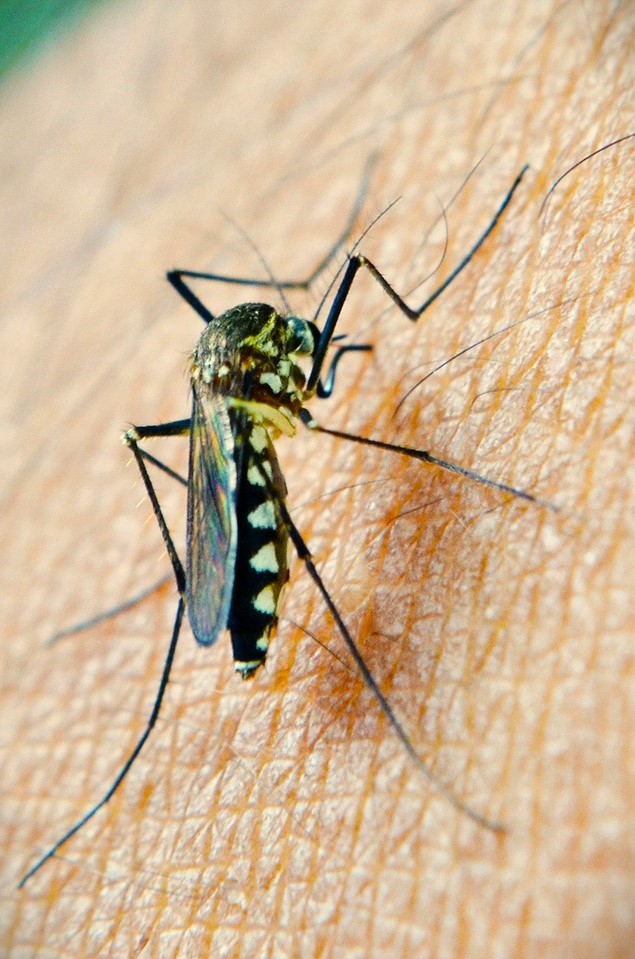
An Empire Diaries Special Report
February 4, 2023: Imagine volunteering for an experiment in which a swarm of mosquitoes will be unleashed on you, and you’ll be bitten by the annoying insects multiple times as part of a scientific study! Far from being a figment of imagination, it is something that happened in real life, thanks to a field trial conducted by US scientists last year as part of an incredible mission to use the flying insect as a live vaccine agent for malaria – a mosquito-borne disease that particularly plagues the economically vulnerable world, including India.
Scientists from Kaiser Permanente Washington Health Research Institute, Seattle Children’s Research Institute, and University of Washington conducted the field trial on a group of young and healthy volunteers using genetically engineered mosquitoes with the aim of developing them as candidates for the prevention of Plasmodium falciparum, a unicellular protozoan parasite that causes malaria.
A dystopian experiment by an emboldened pharma industry, or an audacious attempt in the right direction towards combating malaria – call it what you will, the trial has set both the medical fraternity and critical-thinking circles abuzz for quite some time now.
The unusual experiment involved a controlled human malaria infection (CHMI) trial. It showed that around half of the volunteers did not develop detectable Plasmodium falciparum infection, according to a research article published by the researchers in Science Translational Medicine last August, titled: “A genetically engineered Plasmodium falciparum parasite vaccine provides protection from controlled human malaria infection.”
The WHO’s (World Health Organisation) latest global report on malaria recorded 247 million cases of the vector-borne disease in 2021 as compared to 245 million patients in 2020, while malaria deaths stood at 6,19,000 in 2021 as compared to 6,25,000 a year back. The report highlighted a stark difference between the WHO’s estimates of India’s malaria burden – about 4.3 million – and official reported figures as per government data – approximately 160,000.
Vaccines are usually tom-tommed as potent weapons against deadly diseases. It’s the same scenario with the fight to control malaria. In October 2021, The RTS,S/AS01 vaccine, with the trade name Mosquirix, became the world’s first approved malaria vaccine when the WHO endorsed it. It is based on protein subunits that are expressed by the parasite during early infection and has an efficacy of 30-40%.
But in the case of the latest study, instead of protein subunits, the researchers used the whole Plasmodium falciparum parasites after weakening them through genetic engineering.
Physician and scientist Dr. Sean Murphy, the lead author on the paper in Science Translational Medicine, said the team used a “genetically attenuated (weakened) P. falciparum sporozoite vaccine” that they had earlier developed so that people didn’t get sick. The researchers deleted three genes – P52, P36, and SAP1 – from the malaria-causing parasite to ensure safety.
“Genetically engineered live Plasmodium falciparum sporozoites constitute a potential platform for creating consistently attenuated, genetically defined, whole-parasite vaccines against malaria through targeted gene deletions. Such genetically attenuated parasites (GAPs) do not require attenuation by irradiation or concomitant drug treatment,” the authors wrote.
FLYING SYRINGES
The vaccine – essentially, the genetically attenuated parasite – was then delivered to a small group of 26 healthy volunteers through hundreds of mosquito bites. “We use the mosquitoes like they’re 1,000 small, flying syringes,” recalled Murphy.
The vaccine apparently proved safe and elicited antibodies that blocked infection in 13 volunteers for at least one month. It has been renamed PfGAP3KO, which stands for ‘Plasmodium falciparum GAP’. “The vaccine was delivered by three or five immunisations with ~200 PfGAP3KO-infected mosquito bites per immunisation. PfGAP3KO was safe and well tolerated with no breakthrough P. falciparum blood stage infections,” the researchers concluded. The vaccine-related adverse events reported after the trial were mostly rashes around the areas of the mosquito bites administered.
One month after the last round of immunisation, the volunteers were subjected to CHMI via bites with mosquitoes carrying fully infectious Plasmodium falciparum parasites. “Half of the study’s participants who received either three or five PfGAP3KO immunisations remained P. falciparum blood-stage negative, as shown by a lack of detection of Plasmodium 18S rRNA in the blood for 28 days after CHMI,” wrote the researchers.
Six of the 13 volunteers who showed protection from the parasite were given a second CHMI six months later, and “one remained completely protected”.
The study – led by Lisa Jackson, senior investigator at Kaiser Permanente Washington Health Research Institute, and Stefan Kappe, principal investigator at Seattle Children’s Research Institute and University of Washington – seemed to show that the vaccine was safe and immunogenic and capable of inducing protection against the malarial parasite.
However, the vaccine’s efficacy was shown to be 50% for short-term (one month) protection and only 16% for longer-term (six-month) protection. “In conclusion, our study establishes a proof of concept for the safety, immunogenicity, and efficacy of PfGAP3KO,” the researchers observed.
A JAPANESE STUDY
Twelve years before the publication of the on-field trial on malaria prevention using mosquito-bite vaccines, researchers in Japan, too, transformed mosquitoes into vaccine-carrying syringes by genetically engineering the insects to express the vaccine for leishmaniasis – a parasitic disease transmitted by the sandfly – in their saliva. According to a report in the American journal MIT Technology Review based on a study in Insect Molecular Biology, rodents bitten by these mosquitoes generated antibodies against the parasite. But the researchers at that time regarded the project more as a proof-of-principle experiment than a viable public health option.
As seen in the Japanese experiment, in the malaria field trial, too, there could be huge variations in the number of mosquito bites – in other words, the vaccine doses – that each volunteer received. Therefore, further studies are needed to zero in on the most effective dose range.
Of course, the researchers are hoping to improve the vaccine by eventually putting it into syringes instead of using mosquitoes in order to get the dosage absolutely right. “…An aseptic, purified, cryopreserved, vialled, and DVI-administered formulation PfGAP3KO will allow for safe and precise dose-finding trials to achieve complete sterilising protection with this candidate vaccine,” they wrote.
While scientists are burning the midnight oil to develop an improved vaccine that can more effectively prevent malaria at some point, Big Pharma would possibly be salivating at the thought of yet another potential money-spinner after making megabucks by peddling the hurriedly rolled out and widely criticised Covid-19 jabs.
ETHICS VS. PROFITS:
SHADOW OF COVID
Given the backlash that vaccine manufacturers and the WHO have been facing following the imposition of the Covid vaccine regime since early 2021, it is being widely felt that there’s a need for governments and stakeholders in the healthcare business to adopt an uncompromising stand about the quality of vaccines in the days to come.
Questions are also being raised about the safety of vaccines and ethics involved in the whole process. Already, some controversies have emerged in these past couple of years. One of them was the hue and cry over allegations that the SARS-Cov-2 virus may have leaked from a biosafety lab in China’s Wuhan, the first epicentre of the outbreak.
Another episode involved the highly secretive biosafety facility at Fort Detrick in the US, which gave the world some of the first close-up images of the virus in early 2020. Many people questioned at that time – why Fort Detrick of all places? That’s because the Maryland facility used to be a notorious bioweapons hub that the US government was forced to downgrade back in the 1960s after an outcry over bioweapons-testing on unsuspecting Americans.
Keeping these unanswered questions in mind, the authorities of countries taking part in field trials, such as the one for a malaria vaccine, need to keep a hawk-eye on the safeguards being taken to ensure that genetically engineered parasite-bearing insects are not let out of the confines of the laboratory. Because such an episode would further dent the credibility of jab makers and vaccine scientists, apart from possibly triggering a man-made catastrophe.
REPUBLISHING TERMS:
All rights to this content are reserved. If you want to republish this content in any form, in part or in full, please contact us at writetoempirediaries@gmail.com.








